70 Facts About Food in Italy That Will Surprise You
Nowhere has a food culture quite like Italy.
From the secret recipes that are passed down from generation to generation, to the seemingly infinite number of rules surrounding food, not to mention the often ritualistic nature of eating in Italy, this is a country that is fiercely proud of its food heritage.
Over the years, I’ve spent a lot of time in Italy.
Not only do I have family in Tuscany, but I also lived in Sicily for several months, where I learnt a lot a lot of facts about Italian food!

I’ve travelled all over Italy, seeking out the most iconic dishes everywhere I go.
From couscous festivals in San Vito Lo Capo to street food tours in Palermo, and copious amounts of pizza in Naples, I’ve devoured it all.
I’ve eaten seafood in Favignana, focaccia in Bari, mountain cuisine in Trento, and ALL the pasta in Rome (but I was technically researching for an article about Roman cuisine).
I’ve also dated several Italian men, who all wasted NO time in lecturing me about all the Italian food rules I was breaking.

In this blog post, I’m going to reveal 70 (yes, 70!) facts about food in Italy that I’ve picked up over the years.
I’ll delve into the weird world of Italian food rules, share some fun facts about Italian food, and reveal some old wives’ tales that shape how Italians think and behave when it comes to their eating habits.
I hope you’re not hungry, because I’ve included a LOT of pictures of yummy food I’ve enjoyed in Italy!
Here are 70 facts about Italian food.
70 Facts About Food in Italy That Will Surprise You
Eating Out in Italy
1. Italians say buon appetito at the start of a meal. Italians begin their meal with a hearty ‘Buon appetito!’ which translates to ‘Enjoy your meal!’ Traditionally, this is said by the host, and it’s a simple expression that reflects the deep appreciation Italians have for food and sharing it with loved ones.
2. There are many different types of eatery in Italy. While in the UK or the US, you would just go to a restaurant for dinner, there are various categories of eatery in Italy. The three that you need to know are ristorantes, trattorias, and osterias.
A ristorante is the most formal type, where you can expect white tablecloths, attentive service, and a multi-course meal with an extensive wine list.
A trattoria focuses on hearty, home-cooked meals with fresh, seasonal ingredients. Trattorias are typically family-run and known for their warm and welcoming atmosphere.
Often found in villages and towns, osterias traditionally functioned as inns for weary travellers. Today, they offer simple dishes and local wines at reasonable prices.
3. Aperitivo is designed to ‘open the stomach’ before dinner. Aperitivo is the name of an evening ritual that takes the form of a light drink and snack designed to whet the appetite. In fact, the word aperitivo comes from the Latin ‘aperire,’ which means ‘opener,’ and the Italian word aprire means ‘to open!’
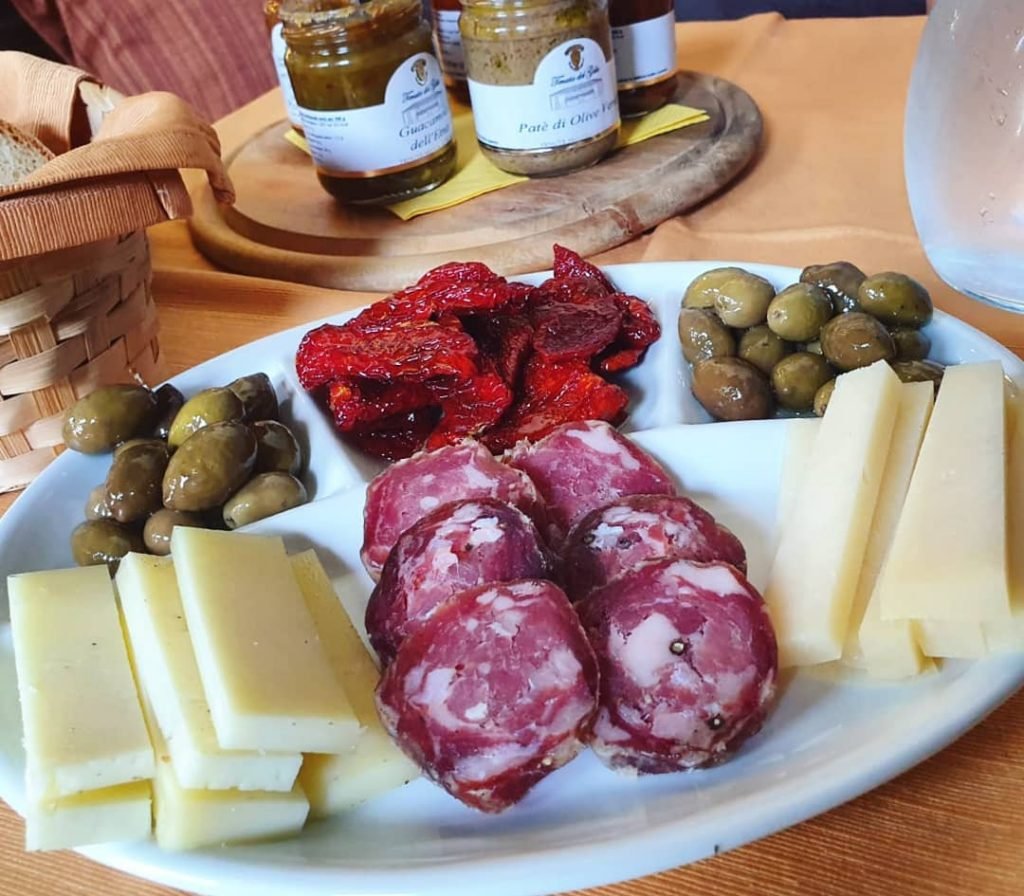
4. Aperitivo dates back to Roman times, only back then it was called gustatio. The richest members of Roman society would prepare for banquets with alcoholic drinks and various amuse-bouches. It was thought of as a tasting that was designed to get everybody mingling before the main event took place.
In fact, Italian food culture in general comes from the Roman love of feasting.
5. Aperitivo is different to apericena. While an aperitivo is a light snack, apericena is aperitivo and dinner combined (the word for ‘dinner’ in Italian is cena). Food at an apericena is served buffet-style, and the type of food tends to be more substantial (think salads, risottos, couscous and pastas). Apericena is not a full-blown dinner, but a chance to indulge in some good food while enjoying drinks.

6. Aperitivo originated in Northern Italy. Vermouth was created as an appetite stimulant in Turin in 1786 by Antonio Benedetto Carpano, and Campari was created in a small town near Milan in 1860. Today, the north of Italy has a much stronger aperitivo culture than the south.
Classic aperitivo cocktails include Negroni, Aperol Spritz, Hugo Spritz, and Vermouth.

7. Appetisers are antipasto. Antipasto could include bruschetta, cold cuts of meat, and cheese plates. Antipasto isn’t an everyday thing, but you’ll certainly see people ordering antipasti in restaurants.
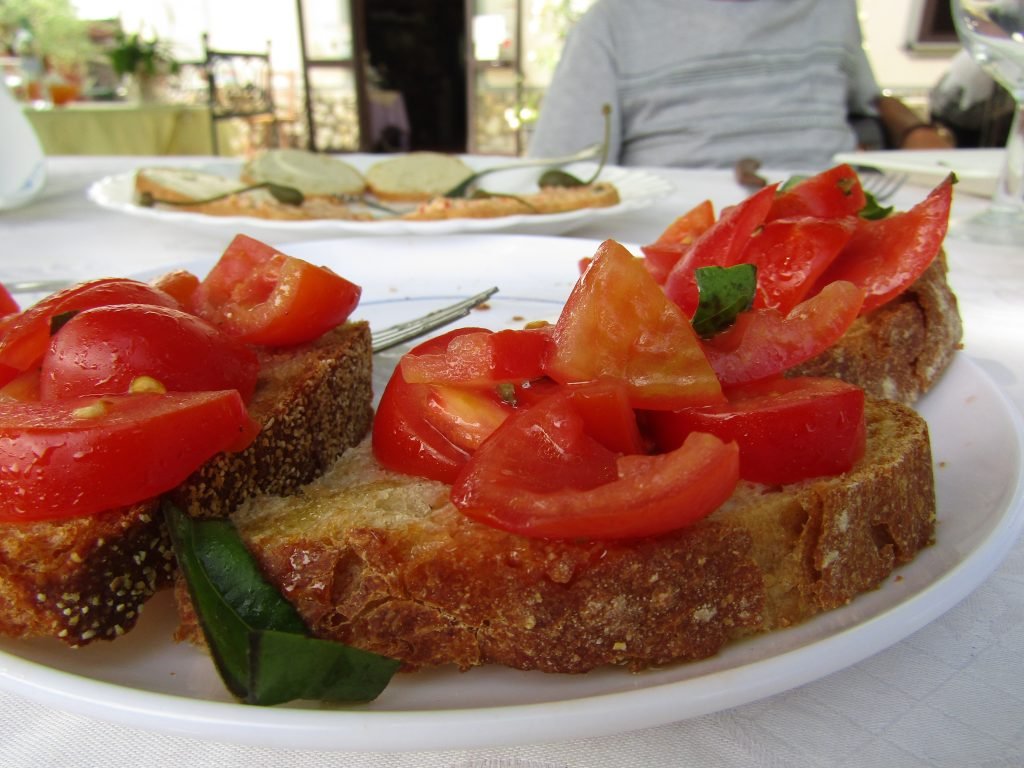
8. Pasta is not a main course. In most countries outside of Italy, pasta is often served as a main course, but in Italy, pasta is served as the primo piatto (first plate), before the main dish. It is also served in smaller portions than you’d find outside of Italy. Primi dishes can also include gnocchi or risotto.

9. The main course is a protein course. The main course is called the secondo, and is typically a meat or fish course. This course does not come with any sides (those are ordered separately).
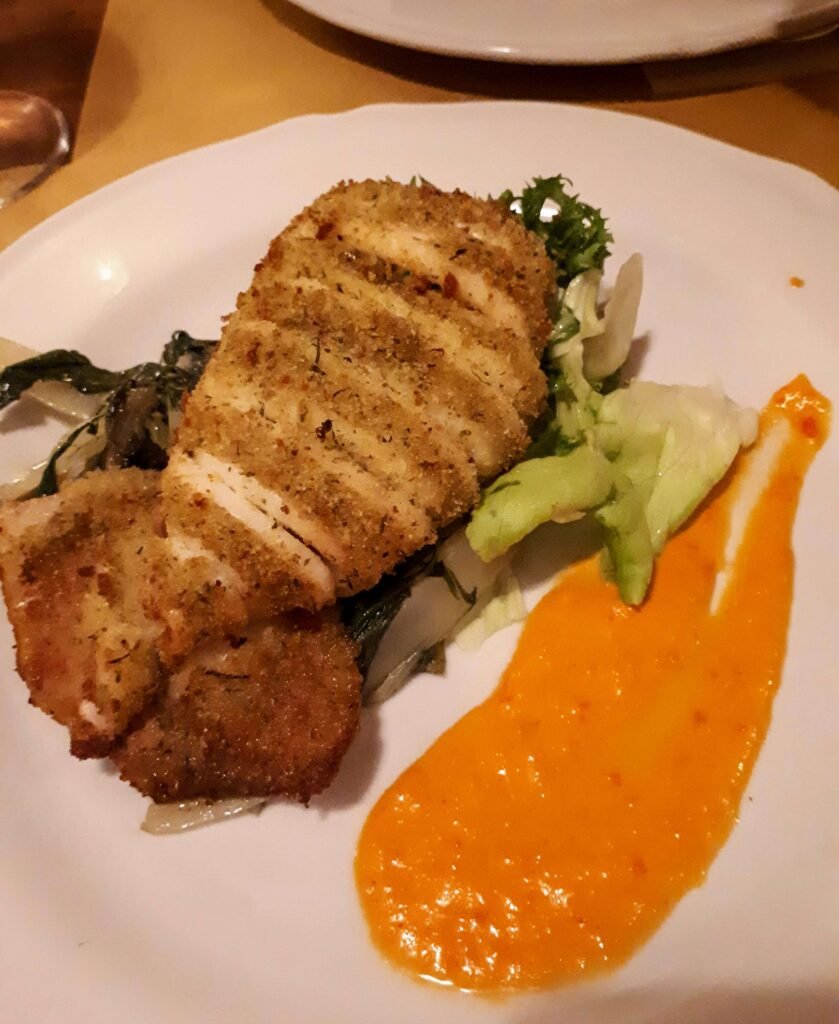
10. Contorni accompany the secondi. Side dishes are called contorni, and include potatoes, salads, and grilled veggies. Typically, the table will order a selection of contorni to share, while everyone orders their own individual secondo.
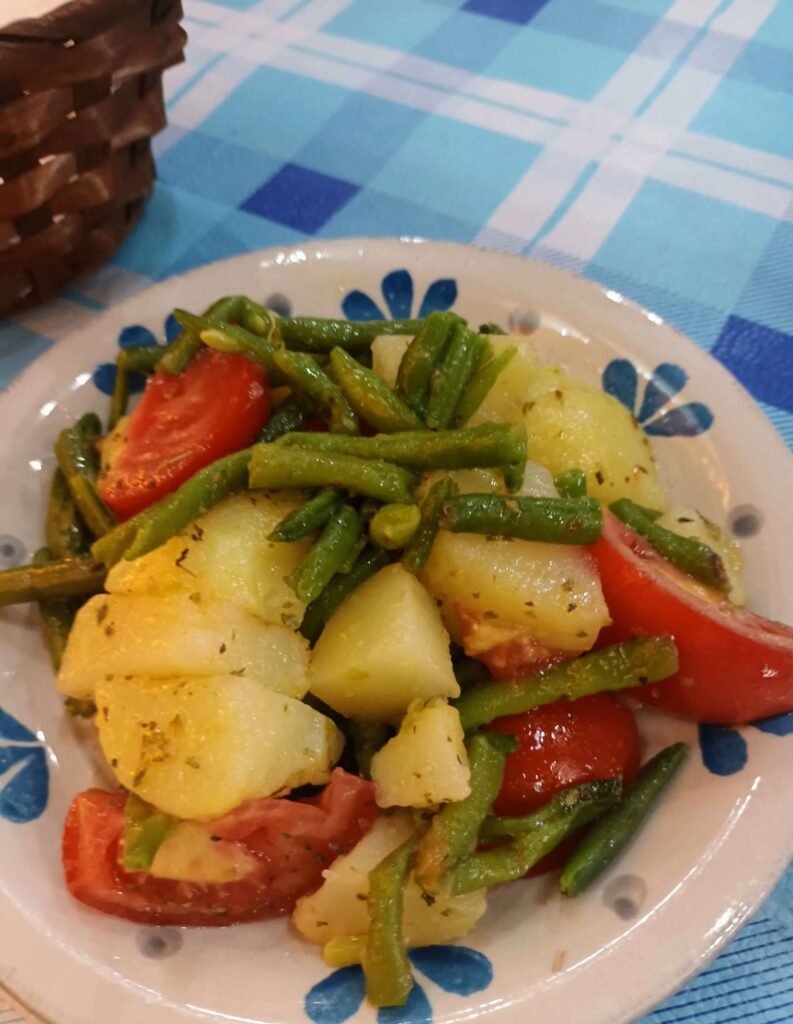
11. Salad is not a main meal in Italy. Italians would never order a salad as a main meal. Instead, salads are served in smaller portions and are supposed to accompany the secondo course.
12. Italian food menus are very literal. If you see ‘tomato salad’ on a menu in Italy, it likely refers to a bunch of chopped tomatoes, and not a whole lot else. Likewise, a ‘burger’ will just be a meat patty on a plate, with nothing else (unless you’re in a more international burger restaurant).

13. Dessert is often served with an espresso, to aid digestion. If you have a sweet tooth, the dolce section of the menu is where you’ll find desserts. It is standard to have a coffee with your dessert.
14. Italians have tapas…sort of. Venetian cicchetti is Italy’s equivalent to Spanish tapas. People in Venice eat cicchetti for breakfast, lunch, and dinner, and the things you’ll see on menus change seasonally.
15. Italians eat dinner late (ish). While they don’t dine as late as Spaniards do, Italians don’t eat dinner super early. Dinner is usually eaten at around 8:30pm, hence the need for aperitivo after work!

Pasta Facts
16. Italian pasta is supposed to be served al dente. ‘Al dente’ means ‘cooked to the tooth,’ and it should have a firm texture. Italians hate overcooked pasta.
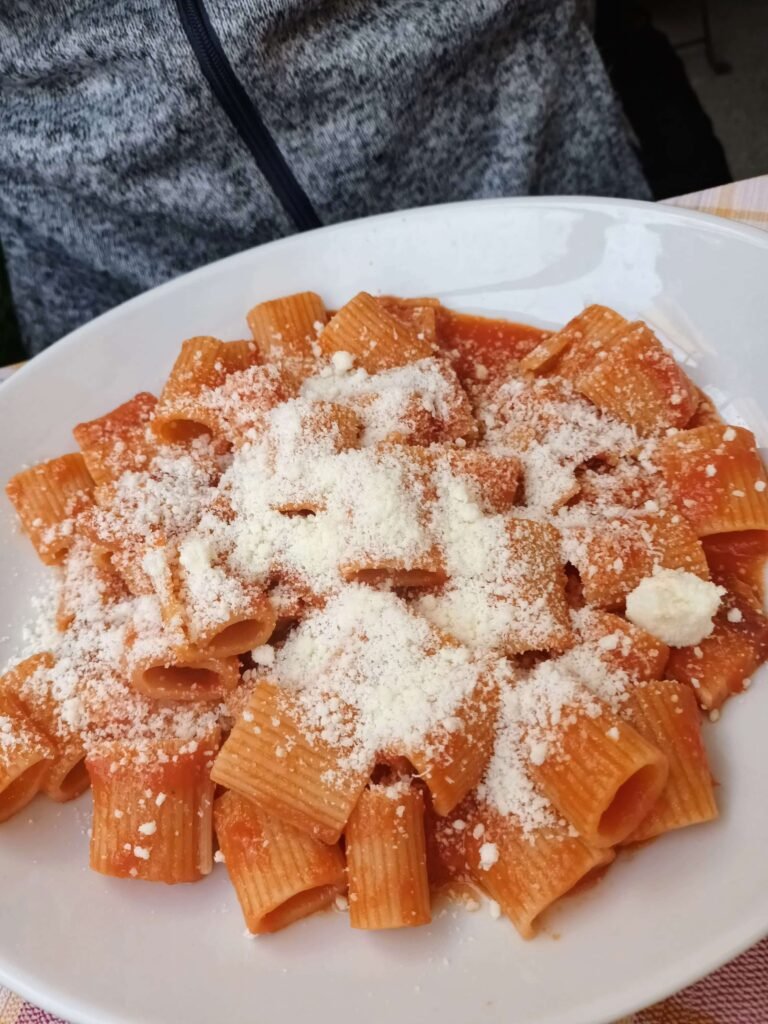
17. World Pasta Day is celebrated every year on October 25th. It came into existence in 1995, with the ‘World Pasta Congress’ (yes, that’s really a thing) emphasising the importance of spreading knowledge about pasta.
18. There are over 350 pasta shapes to choose from! There are so many different pasta noodle shapes out there! Some pasta shapes are regional, and can only be found in specific parts of Italy. Most pasta shapes serve a purpose, and are designed in a way that perfectly complements the dish. For example fusilli pasta is best served with a thick sauce that can cling into its spirals.
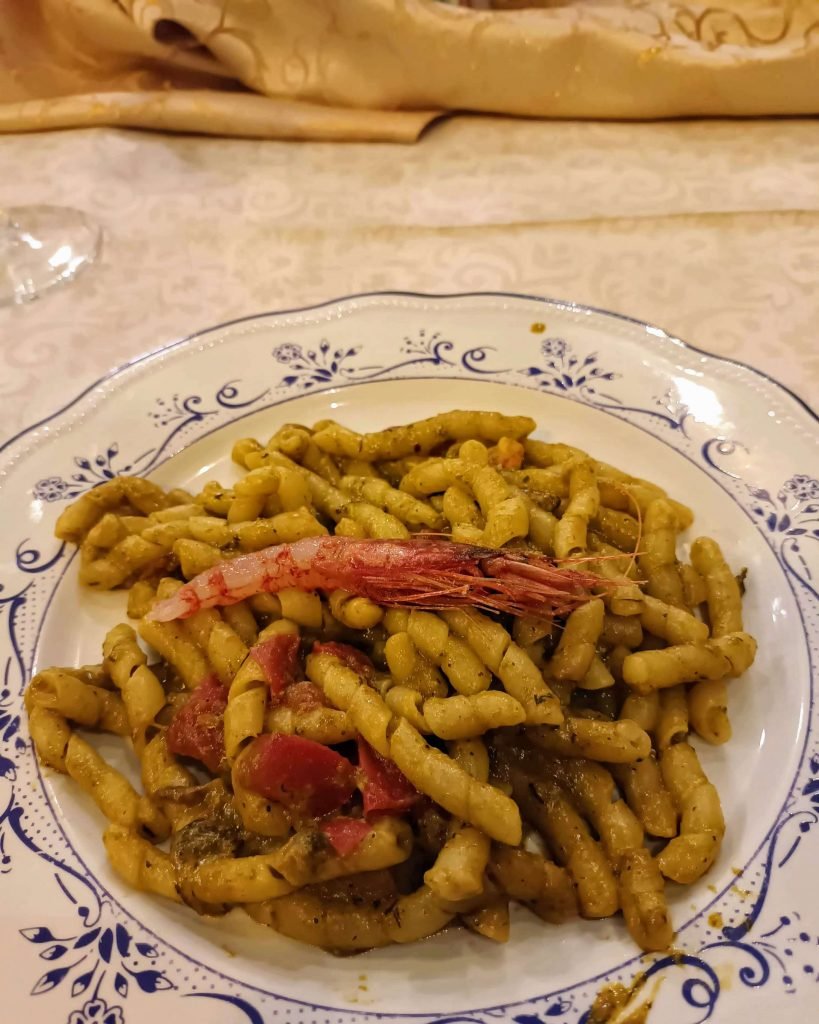
19. The rarest pasta in the world comes from Sardinia. Su Filindeu, which translates to ‘threads of the God,’ is the rarest pasta in the world. For more than 300 years, only the women from a single family in Nuoro (a remote village in Sardinia) have been able to make this intricate pasta, which is about half as thick as angel-hair pasta.
20. Spaghetti Bolognese does not exist. It might be the most famous ‘Italian food’ out there, but ‘Spaghetti bolognaise’ is not an Italian dish at all! It is named after the tagliatelle with ragu (meat sauce) found in Bologna.
21. Italians eat a lot of pasta. The average Italian consumes 60lbs of pasta every year, which is more than 3 times that of the average American!
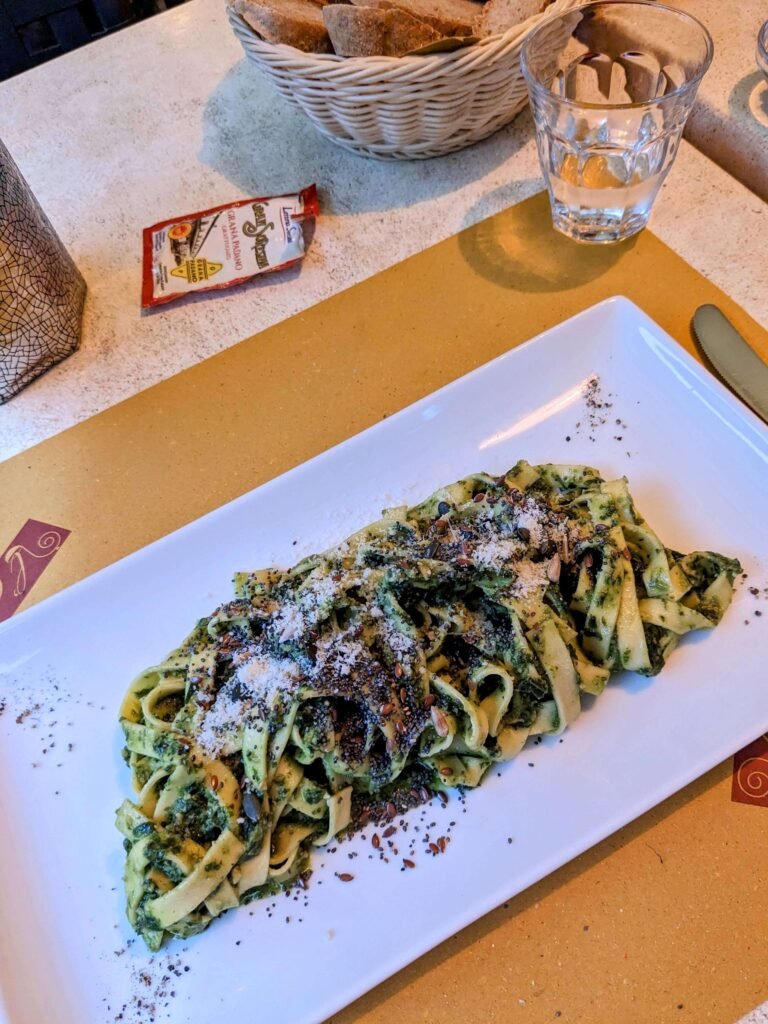
22. Italians don’t use spoons when they eat pasta. While it’s common outside of Italy to use a fork and spoon to eat certain types of pasta with (some people even use a knife and fork to cut spaghetti!), you will never seen an Italian eating in this way. Italians eat pasta with a fork and a fork only.
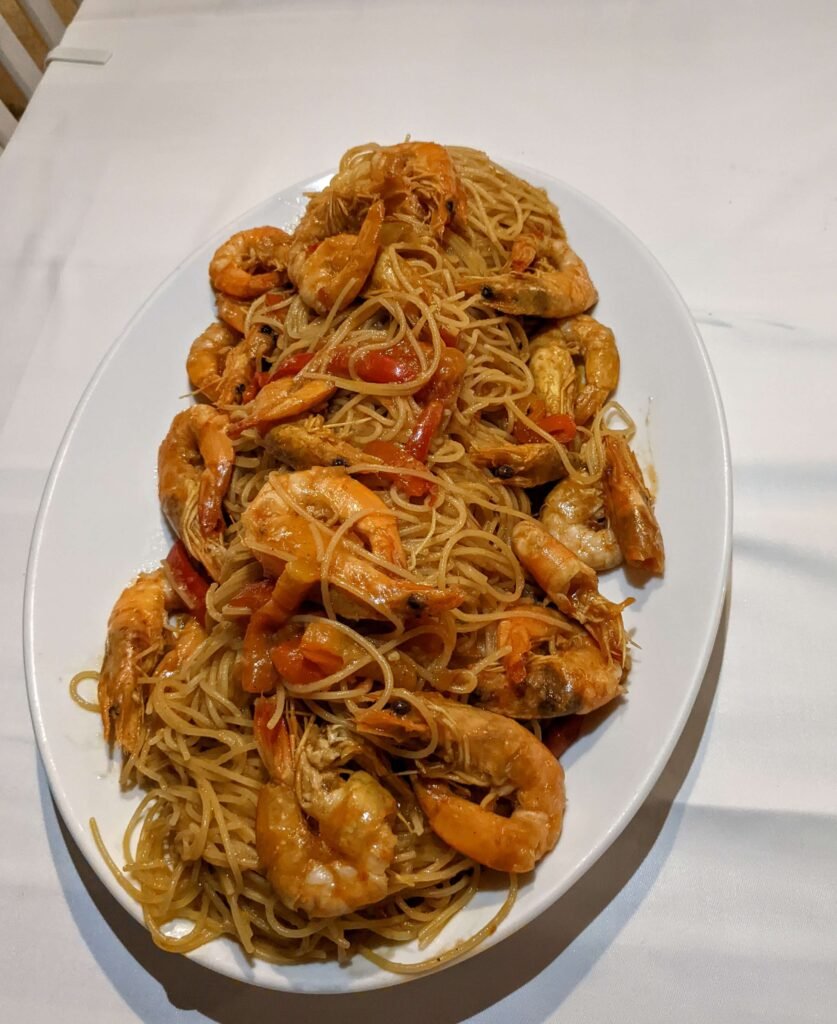
23. Cheese is prohibited on seafood pasta. Italians will never put parmesan cheese on seafood pasta (or anything with seafood, for that matter). It’s practically a criminal offence in Italy to combine cheese with seafood, as I was told in no uncertain terms by an Italian guy that I’d gone to dinner with!
The reason for this rule is that seafood tends to have delicate flavours that would be overpowered by cheese. The exceptions to this rule tend to involve pizza, because the mild taste of mozzarella won’t overpower seafood pizza toppings such as tuna or anchovies.

24. Many ‘Italian’ dishes aren’t Italian at all! It isn’t only spaghetti bolognaise that is an imposter. Fettucine alfredo actually comes from New York, and you will never find spaghetti and meatballs served together.
‘Chicken parmesan’ is also not a thing (Sicilian eggplant parmesan is the original dish), and garlic bread is another Italian-American invention.

25. Not all pasta is vegan. While the majority of pasta that you can buy in the supermarkets is 100% vegan, the fresh pasta that you’ll find in the refrigerators is not vegan, as it includes eggs. This is the difference between dry pasta and fresh pasta!
26. Italians don’t use thick pasta sauces. Unlike Italian restaurants in the US or UK, Italian restaurants in Italy don’t serve pasta with rich, heavy sauces. Italians don’t regard pasta as being some tasteless filler – they appreciate the taste of the pasta itself, and will often only stir a couple of spoons of sauce through the whole dish.
As for the sauce itself, don’t be surprised if it’s simply extra virgin olive oil or butter with some sage. Italians don’t use thick pasta sauces.
27. Carbonara is not made with cream. Piggybacking on the last point, it may surprise you to know that carbonara is not made with thick cream at all! Instead, egg yolks and pecorino cheese are mixed with the pasta to create a silky, more delicate sauce.
Facts About Pizza
28. Pizza is not consumed with wine. While Italians certainly love wine, you won’t catching them drinking it while enjoying a pizza. The go-to choices for pizza are beer or Cola Coca. The carbonation in beer and soda is believed to aid digestion, which is helpful with the rich cheese and dough used in Italian pizzas.
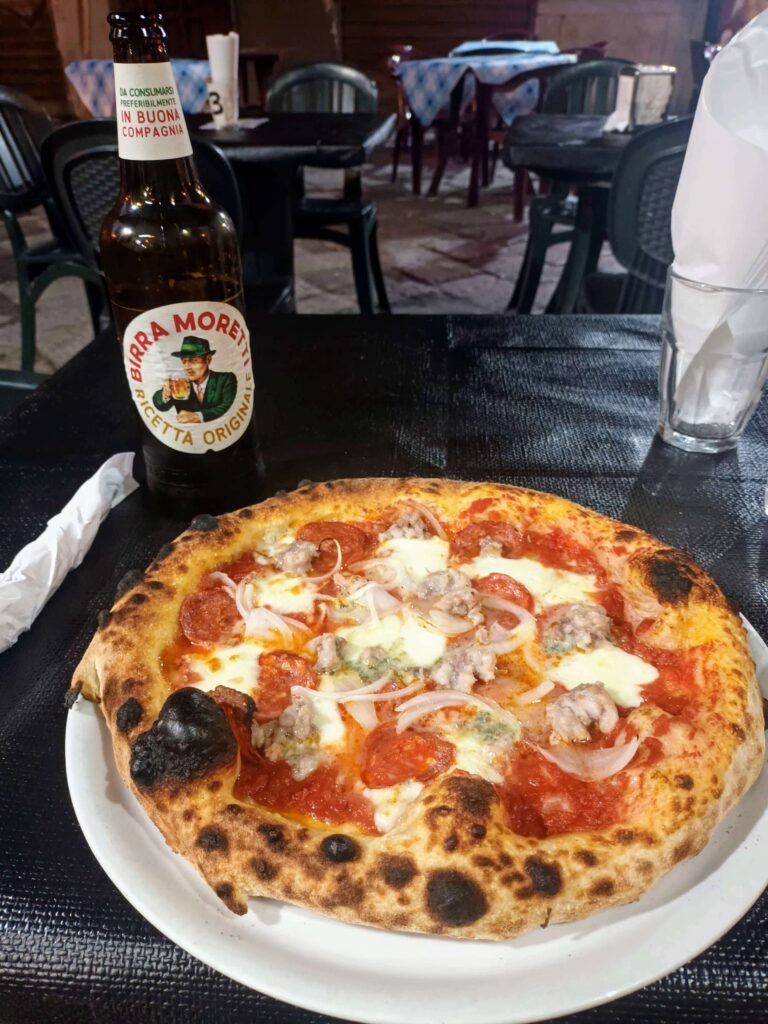
29. Pizza originated in Naples. The 16th to 18th centuries is where pizza as we know it is believed to have originated. The city’s working class often relied on affordable, portable meals, and flatbreads with tomato, cheese, and other toppings became a popular street food.
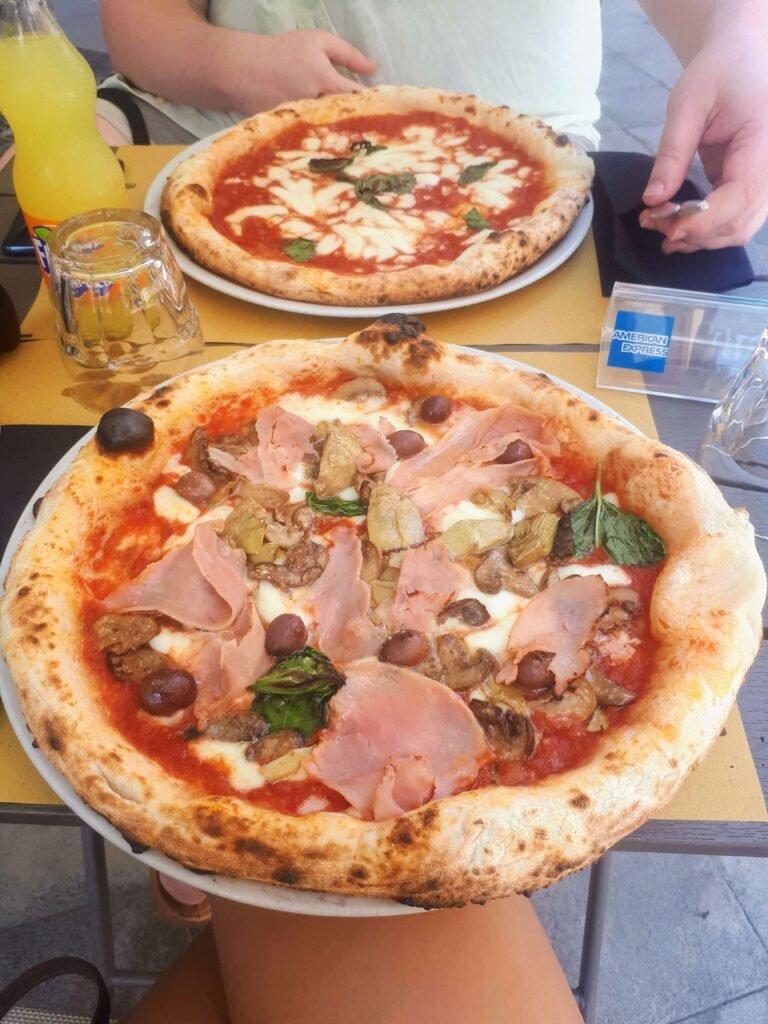
30. The world’s first ever pizzeria is still serving pizza in Naples. Established in 1830, Antica Pizzeria Port’Alba, remains a must-visit for pizza lovers.
31. The roots of pizza can be traced back to ancient times. Egyptians, Greeks, and Romans were known to enjoy flatbreads topped with olive oil, herbs, and cheeses. These weren’t pizzas in the modern sense, but they were definitely early ancestors.
32. Pepperoni is not pepperoni in Italy. If you ask for a ‘pepperoni’ pizza in Italy, you will be served a ‘peperoni’ pizza (note the missing ‘p’), which is actually a pizza topped with bell peppers. If you want the spicy sausage, ask for pizza diàvola or pizza con salamino piccante (pizza with spicy salami).
33. The classic Margherita pizza is named after Queen Margherita! Not only is the most famous pizza allegedly named after Queen Margherita, but the colours of the tomato, mozzarella, and basil pizza also pay tribute to the Italian flag.
34. Pizza isn’t made to share. Outside of Italy, people will often order large pizzas and share them between groups of friends. However, in Italy, pizzas are smaller and created on the assumption that they are only for one person. Whole pizzas tend to be saved for dinnertime, however, with pizza al taglio (pizza by the slice) from a bakery being a common option for lunch.
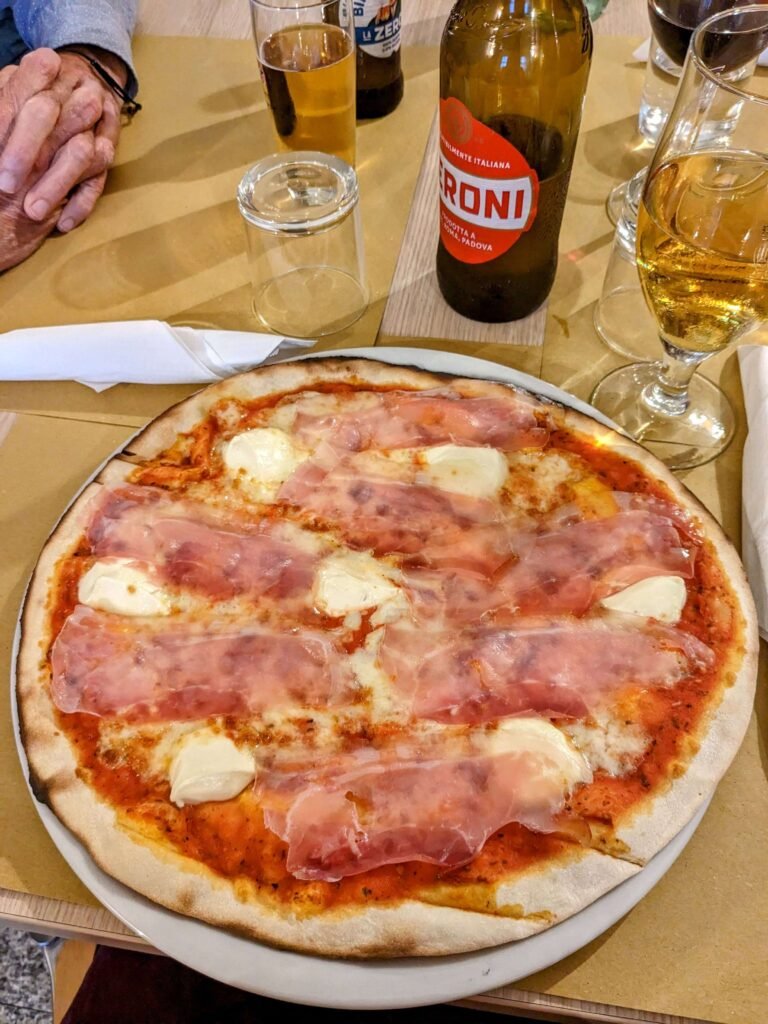
35. Neapolitan pizza-making is a UNESCO Intangible Cultural Heritage element. In 2017, UNESCO recognised the the art of Neapolitan pizza makers as an Intangible Cultural Heritage element. This highlights the traditional skills and knowledge passed down through generations of Neapolitan pizza makers.
36. Your pizza in Italy won’t arrive sliced. This might come as a surprise, but pizza in Italy is never served sliced. Instead, you’ll cut it yourself using a knife and fork.

37. Italians NEVER have pineapple on pizza. I’m hoping that this doesn’t come as a surprise to anyone, but Hawaiian pizza is just not a thing in Italy, and you will never find it on the menus in restaurants.
Funnily enough, I was in Sicily during the pandemic, and when every other type of pizza in the grocery stores had sold out, the Hawaiian pizzas were still in the fridges.
That’s right – Sicilians refused to buy Hawaiian pizzas, even when there were no other options.
More Facts About Italian Cuisine
38. The bread on the table isn’t to be eaten before the meal. Something that tourists make the mistake of doing all the time is scoffing the table bread as soon as it’s put on the table. In actuality, this bread is for mopping up all the delicious pasta sauce leftover after you finish eating. The process of doing this is known as ‘fare la scarpetta’ or ‘make the little shoe,’ and it refers to the bread being the ‘little shoe’ on the end of your finger, scooping up all the juice!
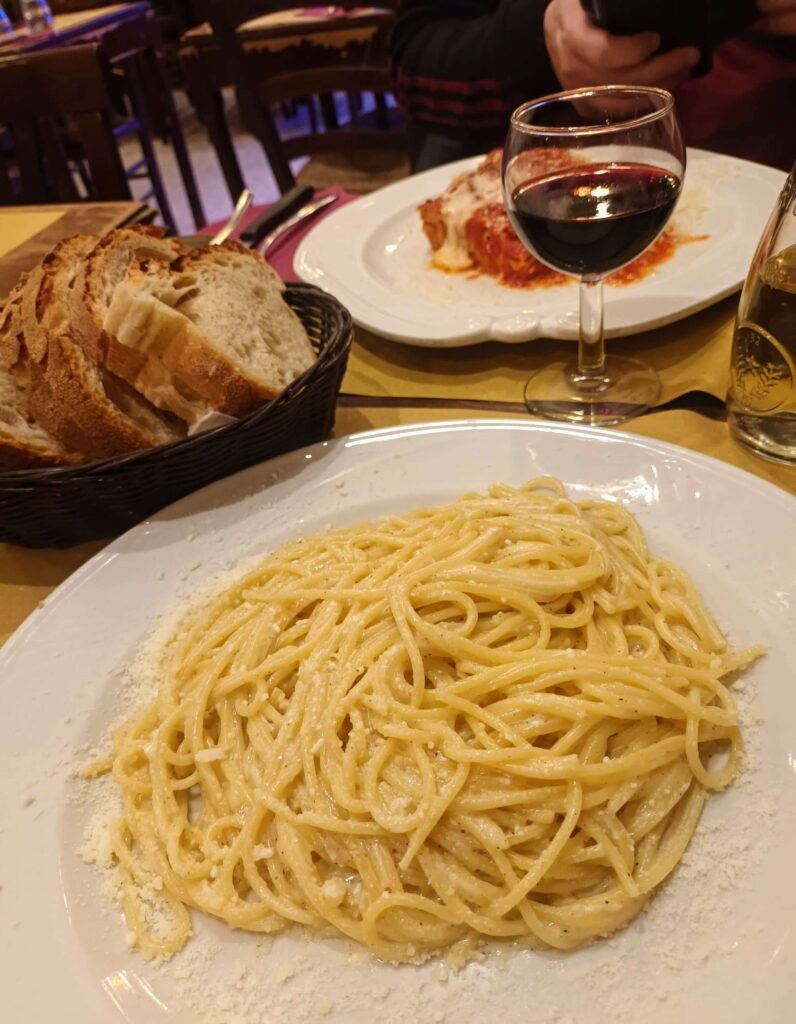
39. There are over 200 protected ingredients in Italy! These products are part of a system that ensures the quality and authenticity of traditional Italian foods. The system helps to protect certain ingredients from imitation, ensuring that customers get the genuine article, which is a testament to Italy’s dedication to preserving traditional food production methods.
40. February 13th is National Italian Food Day! Don’t want to celebrate Valentine’s Day on the 14th? No problem! Celebrate something much better – National Italian Food Day – on the 13th instead!
41. Italy is the birthplace of the Slow Food movement. The Slow Food movement actually started in Rome as a protest to the growing number of fast food establishments opening in the city. Specifically, plans to open a McDonald’s near the Spanish Steps are what triggered the movement, led by journalist Carlo Petrini.

42. Italy produces more varieties of cheese than anywhere else in the world! You’d be forgiven for thinking that France produced more types of cheese than anywhere else, but actually Italy does! Estimates suggest that Italy boasts over 2500 traditional cheese varieties, far surpassing other cheesemaking countries.
43. Food in Italy varies according to region. Many people think that Italian food is all about pasta and pizza, but that couldn’t be further from the truth. The mountainous regions in the north make hearty dishes using lots of butter and lard. You’ll find a lot of polenta, risotto, cheese, and potatoes here.
In the south, you’ll find more seafood, as well as pizza and pasta. If you go very south, you’ll find Arab influences on the cuisine, with couscous being one of the most popular dishes in Sicily.

44. Many Italian recipes are cucina povera, or peasant food. When throwing away food wasn’t an option, Italians would use whatever they had in their pantry, which resulted in some delicious meals that remain popular today! One of my favourites is a Sicilian peasant food called pane cunzatu, which literally translates to ‘seasoned bread.’
Pane cunzatu is made by taking a hunk of crusty bread, drizzling it with extra virgin olive oil and layering sliced tomatoes, mozzarella, salt, pepper and oregano, with anchovies or sardines added on top.
45. Italians LOVE olive oil. Italians are really proud of their olive oil, and they use a lot of it. Italy is one of the most popular countries for olive oil tourism, and you can experience a many different types of olive oil tours here.
Unfortunately, olive oil production has been in decline in Italy for the last few years, largely due to climate change.

46. Buffalo Mozzarella really comes from buffalos! While most mozzarella sold outside of Italy is made from cow’s milk, Mozzarella di Bufala comes from the milk of water buffaloes. Buffalo Mozzarella is known for its richer taste, creamier texture, and slightly yellow hue, and it has a Protected Designation of Origin (DOP) in Italy.

47. Italians eat by season. This is why the fruit, vegetables, and herbs are so fresh and tasty in Italy! My favourite time is at the beginning of spring, when artichokes come into season!

48. Offal is very popular in parts of Italy. Not many people know this, but Sicilian cuisine includes an offal lot of offal (see what I did there?). From spleen sandwiches, to grilled intestines, and leftover cartilage, Sicilians are certainly not squeamish when it comes to their food!
When I lived in Sicily, I ate pane con la milza (spleen sandwiches) regularly, and all I have to say is don’t knock it until you’ve tried it!
You can read more about this in my guide to street food in Palermo, and my review of a Palermo street food tour.

49. Caesar salad WAS invented by an Italian, but it wasn’t Julius Caesar. Caesar Cardini was an Italian who created the salad on the spot in his restaurant in Tijuana, Mexico, when he was running short of other ingredients. The original salad was made with romaine lettuce, parmesan cheese, croutons, olive oil, lemon juice, and Worcestershire sauce.
50. Italy is home to an annual couscous festival! Remember earlier, when I said that couscous is famous in Sicily? Well, the island is also home to its very own annual couscous festival, which is a 10-day event held every September in San Vito Lo Capo. The event hosts cooking competitions and shows, food tastings, and there are also pop-up bars and DJ sets on the beach!
I went to Cous Cous Fest in 2019 and it was a lot of fun!

51. Balsamic vinegar comes from Italy! Balsamic vinegar originates from a specific region in Italy – Modena and Reggio Emilia, in the north-central part of the country. This area boasts a long history of grape cultivation and balsamic vinegar production, with traditional methods dating all the way back to the Middle Ages.
52. Gelato is not the same thing as ice cream! Most people think that gelato is just the Italian word for ‘ice cream,’ but it’s actually a different recipe altogether! Gelato contains more milk and fewer eggs, and its slower churning method results in a smoother, creamier texture than ice cream.

53. The correct name for arancini is in dispute. If you’ve tried the famous deep fried risotto balls in Sicily, you’ll know that they’re something special, but depending on where you go in Sicily, they have a different name!
On the east of the island, they’re called arancino (arancini plural), whereas on the west of the island, the ending changes, and they’re called arancina (arancine plural).
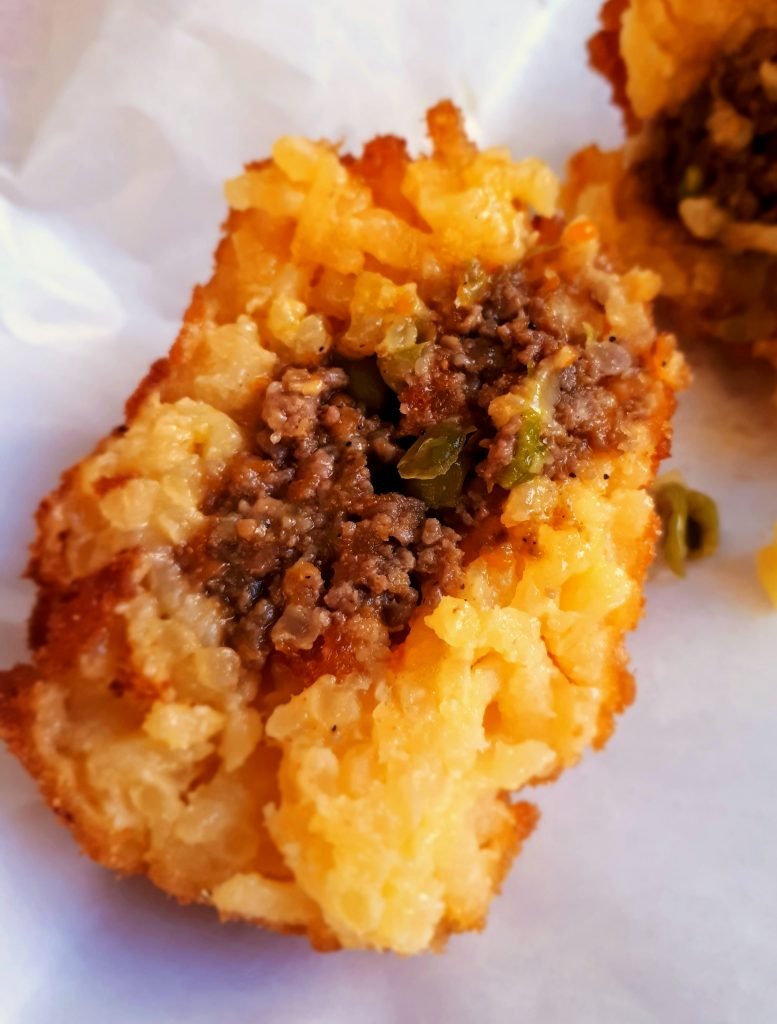
ArancinA is a feminine word, and comes from the fact that the rice balls resemble an orange (arancia) after being fried. ArancinO is a masculine word, and some say that this is because the word for ‘orange’ in the Sicilian language (rather than Italian) is masculine. Others say that the masculine form comes from the fact that the most common filling is a ragu meat sauce, which is masculine.
Regardless of which camp you’re in, I think we can all agree that these controversial rice balls are very tasty!
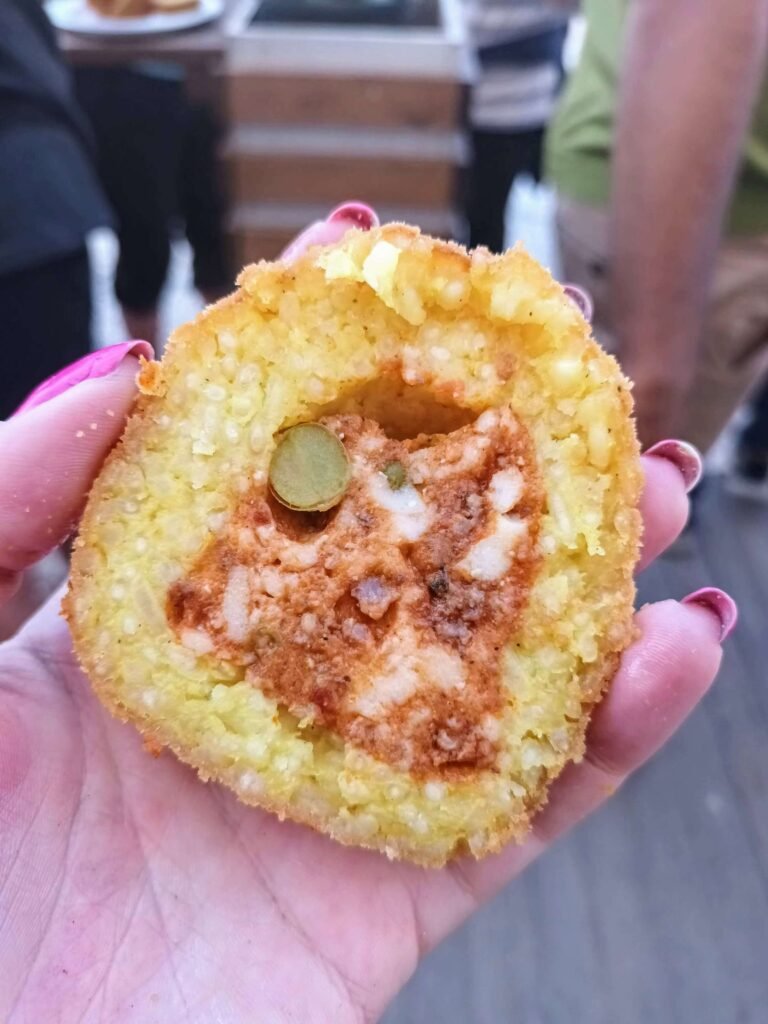
54. Italians eat fish on Christmas Eve. This tradition stems from several factors. First, Christmas Eve falls during Advent, when Catholics abstain from eating meat on certain days. Fish is seen as a suitable alternative. Fish also reflects a simpler meal (or ‘lean feast’) before the larger feast on Christmas Day.
55. Biscotti was originally served with vin santo (sweet wine). These days, it’s much more commonly enjoyed with coffee. In fact, according to a 2019 poll 57% of all Italians eat biscotti first thing in the morning, which is an incredibly high number!

56. Italian breakfasts are small in size and sweet in taste. Its aim is to give your digestive system a kick-start and give YOU a quick burst of energy in the form of sugar and caffeine. Usually, Italians will simply eat a sweet pastry or brioche, along with a cappuccino. Italians find it bizarre to eat savoury things for breakfast – you will certainly never be served eggs and bacon in an Italian household!
Italian Drinking Rules
57. Italians don’t drink cold water. Water is always served at room temperature in Italy. This is because of an old wives’ tale that says cold water is bad for you, and if you’re ever in the presence of an Italian nonna, she might just give you a whack around the head if she catches you drinking iced water!
58. Italy is the world’s biggest wine producer. Every single region in Italy produces wine, and the largest producing regions are Veneto, Tuscany and Piedmont. Italians love their wine, and it’s totally normal to enjoy a glass of wine during lunch.

59. Toasting with water or crossing glasses when you toast is considered bad luck. It’s also bad luck not to look somebody in the eyes while clinking glasses. Superstitions like this are very common across Europe, and Italy is no different!

60. Some alcoholic drinks are digestivi. The opposite of aperitivo, a digestivo is thought to settle the stomach after a meal. Common digestivo drinks include amari (bitter herbal liqueurs), limoncello, sambuca and grappa.
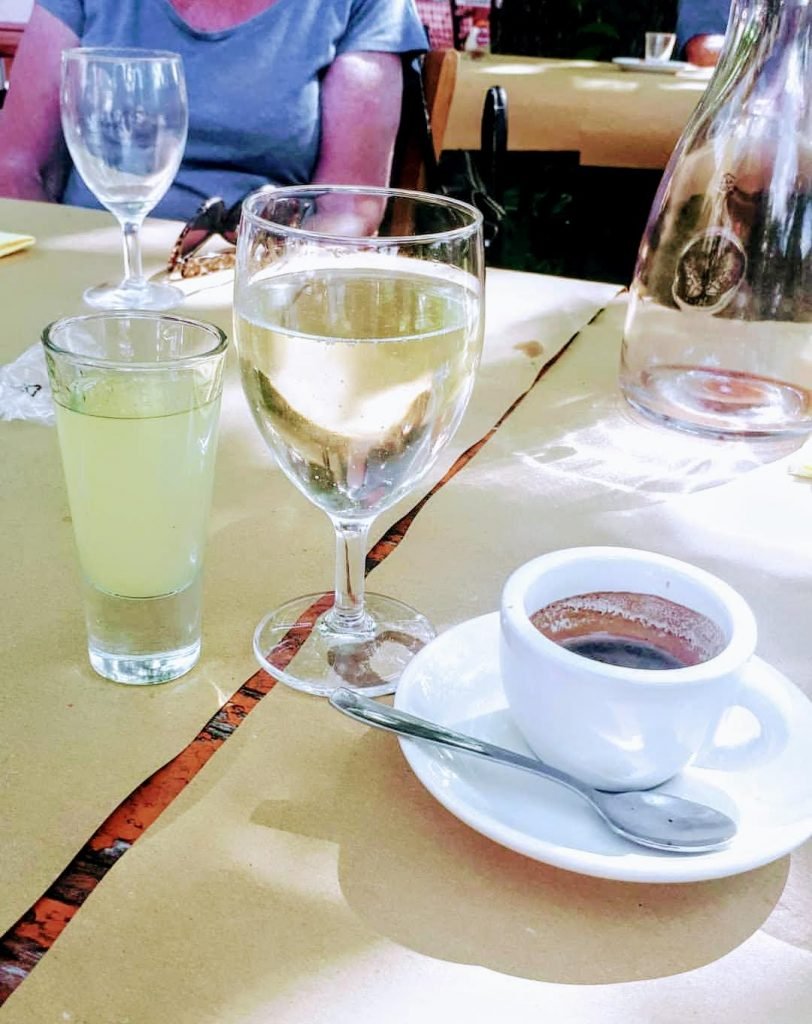
Facts About Coffee in Italy
61. Cappuccino is for the morning. In Italy, cappuccino is a morning drink. There is an old wives’ tale which teaches that drinking milk in the afternoon is bad for digestion, and will interfere with your ability to be productive during the second half of the working day. Most Italians will order a cappuccino with breakfast, and stick to espresso in the afternoon.

62. ‘Caffe’ (coffee) means espresso. If you ask for a caffe in Italy, you will be served an espresso. This is a regular coffee in Italy, and if you want extra water then you will have to specify.
63. Espresso is for any time. Unlike cappuccino, it is normal to drink espresso at any time of day, and especially after meals. This is because espresso is seen as a digestivo.
64. Alcohol ‘corrects’ coffee in Italy! In Italy, if you ask for a ‘caffè corretto‘ (literally, ‘corrected coffee), you’ll receive a shot of espresso mixed with either sambuca, grappa, or brandy. My aunt, who lives in Tuscany, often orders a caffè corretto with sambuca after she’s finished her meal in a restaurant!
65. Venice is home to some of the oldest coffee houses in the world. Established in 1720, Caffè Florian is considered the oldest coffee house in Venice, and one of the oldest continuously operating coffee houses in the world.
66. Italians drink water before coffee. Tradition in Italy dictates that you should prepare your palate for coffee by taking a sip of water first. Coffee, particularly espresso, is savoured in Italy. The water is part of the ritual, ensuring you experience the full range of flavours in your coffee.
67. Italians drink their espresso quickly, while standing at the bar. If you choose to sit at a table, you will likely have to pay a coperto or ‘table fee’ which increases the price of your coffee dramatically! This is the reason why you will often see Italians stood enjoying their coffee at the bar.
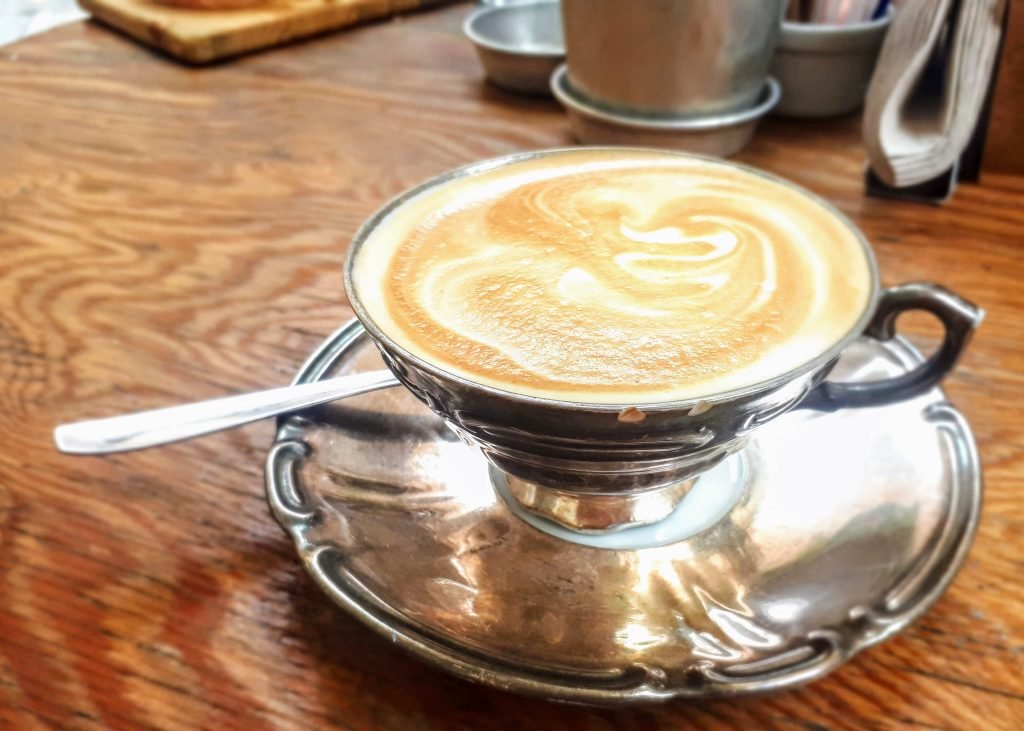
68. A ‘latte’ is just milk in Italy. If you ask for a ‘latte’ in Italy, you will likely be met with a confused expression and a glass of warm milk. You see, the word ‘latte’ in Italian simply means ‘milk,’ so if you want your shot of coffee then you must ask for a ‘caffe latte!’
69. Italians make coffee on the stove. At home, Italians typically brew their coffee on the hob using a Moka coffee pot.
70. Coffee comes in one size (usually). Unlike what you might see in Starbucks or Costa, bars in Italy don’t serve coffee in a range of sizes. I’ve only ever seen coffee offered with a ‘medium or large’ option once, in one of my favourite cafes in Palermo.
Facts About Food in Italy | Final Thoughts
When it comes to facts on Italian food, I like to think that I know my stuff.
Italians are a very particular bunch (and I say that with all the love in the world), and their relationship to food almost mirrors their personalities – Italians are traditional, they like nice things, and they’re perfectionists, and food culture in Italy reflects this very well.
If you enjoyed this article, you might enjoy some of my other posts about Italian cuisine:
Rome for Foodies
Street Food in Catania
Street Food in Palermo
Italian Aperitivo Explained
Bari for Foodies
The Ultimate Guide to Sicilian Cuisine
A Guide to Breakfast in Italy
That’s all I’ve got for today’s post, but as always, if you have any questions (or criticisms!), don’t hesitate to reach out in the comments section below!
Until next time,
XOXO
If you liked this article and would like to support my work, please click the button above to donate a couple of bucks and buy me a coffee. The ad revenue that I receive on this website is minimal, so support from my readers enables me to keep creating content that you (hopefully!) love to read.
